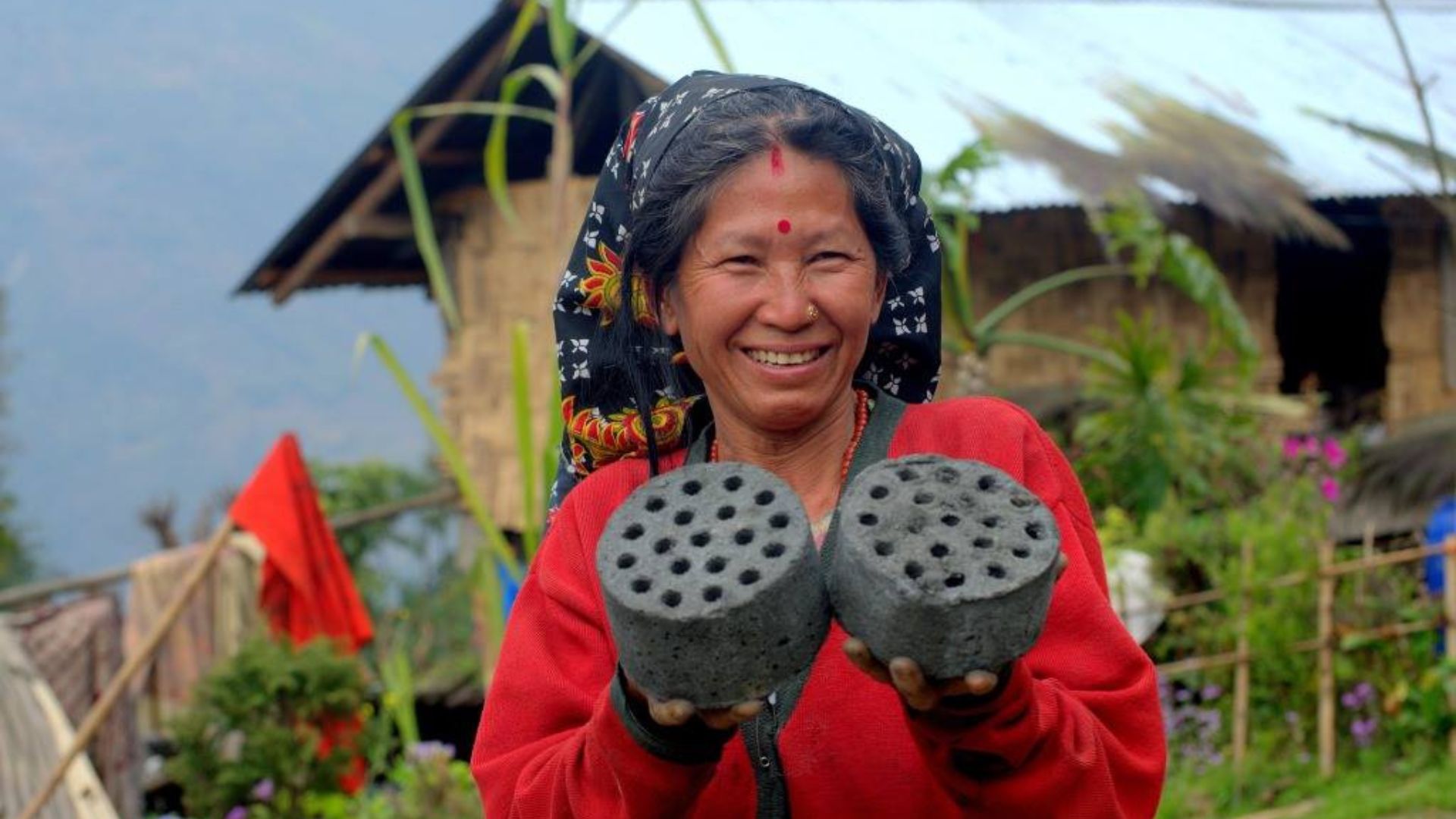Forest-PLUS, launched by USAID and the Government of India, aims to improve the management of forests to combat climate change, conserve biodiversity and enhance livelihood benefits.
July 2020

In Sikkim, “Bio-Briquettes” were made and promoted to reduce fuelwood extraction. Photograph courtesy USAID
It is estimated that about 300 million people in India depend directly on forests for sustenance. However, a large percentage of India’s forests are degraded, which impacts the flow of forest goods and services critical for inclusive economic growth. To address these challenges, the United States Agency for International Development (USAID) signed a bilateral agreement with the Government of India and launched the Forest-PLUS program in 2012.
From 2012 to 2017, Forest-PLUS focused on initiatives to reduce forest carbon emissions in Karnataka, Madhya Pradesh, Himachal Pradesh and Sikkim. USAID and India’s Ministry of Environment, Forest and Climate Change (MoEFCC) designed Forest-PLUS to combine technical expertise in India and the U.S. to develop and field-test innovative ways of managing Indian forests to mitigate climate change, conserve biodiversity, improve environmental services and enhance livelihood benefits.
There are many examples of successful outcomes of the program, which were direct results of the collaborative work done by USAID and MoEFCC.
In Sikkim, for instance, “Bio-briquettes,” or biofuel substitutes, were made and promoted to reduce fuelwood extraction. In addition, Buddhist monks from Rumtek and other monasteries were provided information on climate change through the Monks for Climate Change campaign. Innovative solutions were developed in partnership with local communities and forest officials in two wildlife sanctuaries in the state, to reduce human-wildlife conflict.
In Rampur, Himachal Pradesh, the introduction of solar heating systems reduced firewood use by 32 percent, helped lessen women’s workload, and improved grazing management techniques that yielded about seven times as much grass while saving trees. The work in Shivamogga in Karnataka is no less significant. Along with a project to cover 21,453 hectares of forests to reduce forest carbon emissions and equip six village forest institutions with the materials and knowledge to monitor carbon emissions, there has also been use of radio outreach and street plays to educate people about climate change and sustainable forest management. In Hoshangabad, Madhya Pradesh, where forests are seasonally dry, planting new trees outside the forest, by leveraging resources from corporate enterprises, proved to be a successful strategy in saving the natural forests.

FOREST-PLUS supported solar heating systems in Rampur, Himachal Pradesh. Photograph courtesy USAID
Building on the huge success of Forest-PLUS, with some of the initiatives being firsts of their kind, Forest-PLUS 2.0 was initiated in December 2018. A five-year program designed to improve the management of targeted forest landscapes in Gaya, Bihar; Thiruvananthapuram, Kerala; and Medak, Telangana, Forest-PLUS 2.0 takes on a larger challenge of protecting water in forests. Varghese Paul, senior forestry advisor with USAID India, terms this “forests for water and prosperity.”
“Water is one of the very important ecosystem services that the forested landscapes provide,” says Paul. “In times where India, with just 4 percent of the world’s water, caters to 16 percent of the world’s population and 18 percent of the livestock, this assumes a much greater significance and importance.” A 2016 analysis of 290 of India’s approximately 400 rivers showed that over 70 percent were in critical condition due to diminished water flow, unsustainable use or pollution.
“The increasing freshwater scarcity has elevated the importance of forests as ‘water tanks’ since many rivers originate and are sustained by forested landscapes,” says Soumitri Das, forestry specialist with USAID India. Without thriving forests, millions of people, animals and ecosystems will lose not only their economic base, but also the ability to stabilize the climate that is essential for clean air and water. People will also lose the ability to use the forests for recreation and spiritual purposes.
“Forest-PLUS 2.0 is tasked with the immense challenge of bringing about a shift in the way forests are managed in India, shift to an ecosystem approach to forest management that focuses on enhancing the entire gamut of services that the forests provide,” says Ujjwal Pradhan, chief of party of Forest-PLUS 2.0. “Linked with that is the challenge to improve, beyond subsistence, the livelihood of all those who rely on this incredible natural resource.”
“Fortunately, with advanced tools and technology, the most dedicated and educated minds in India and the U.S. working together and the critical support of those who live in these communities,” says Paul, “there is much to be excited about as we face the climate crisis with not only an eye on the dangers, but also on all the opportunities aimed at living in harmony with the forests.”
Megan McDrew, based in Monterey, California, is a professor of sociology at the University of California, Santa Cruz, and the University of California, Merced.
COMMENTS